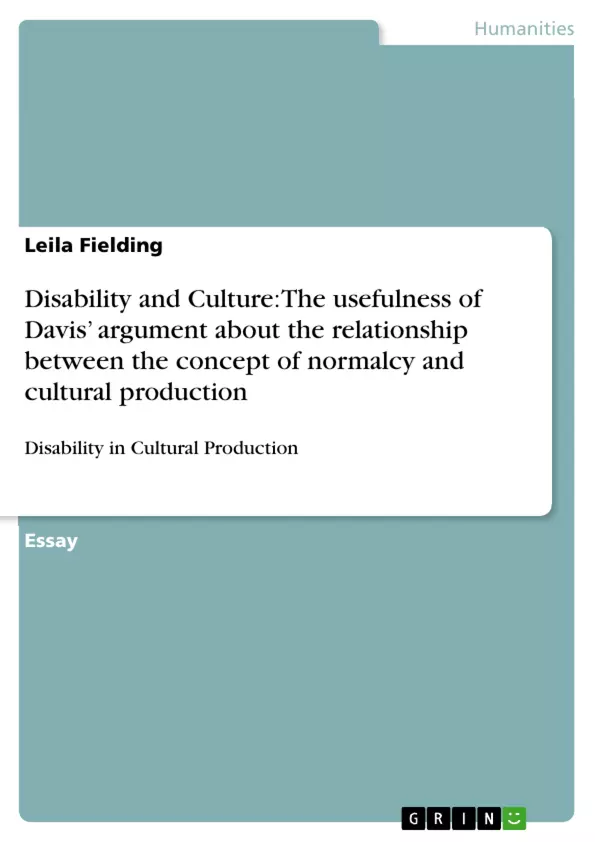Disability is a natural part of the human condition. Almost everyone you cross paths with will possess some form of deviance from the socially enforced ideological norm, whether or not they choose to let this be apparent. Every person will, at some point, experience some form of impairment or disability during their lives; be it brought on by disease, depression, old age, injury or deterioration. “Disabilities are less the property of persons than they are moments in a cultural focus. Everyone in any culture is subject to being labelled and disabled.” Yet, despite the temporality of ability, disability is still marginalised, distorted and concealed within mainstream culture. Types and categories of disability are extensive, escalating and erratic. It is therefore absurd that society clings to the notion of normalcy like an anxious child clutching its mother’s hand. People are disabled by culture, as well as by society. Depending on how difference is perceived and acknowledged, people can be enabled or disabled by those around them. Disabilities are therefore manufactured by society and represented by culture.
Inhaltsverzeichnis (Table of Contents)
- Disability and Representation
- Case study: Science Fiction
- H. G. Wells, The Country of the Blind
- John Varley, The Persistence of Vision
Zielsetzung und Themenschwerpunkte (Objectives and Key Themes)
This essay aims to explain and assess the usefulness of Lennard Davis' argument about the relationship between the concept of normalcy and cultural production, with reference to two science fiction texts: H.G. Wells' "The Country of the Blind" and John Varley's "The Persistence of Vision."
- The hegemony of normalcy and its influence on cultural production
- The historical development of the concept of normalcy and disability
- The marginalization and misrepresentation of disability in cultural representations
- The role of science fiction in challenging or reinforcing stereotypes of disability
- The social construction of disability and its impact on societal perceptions
Zusammenfassung der Kapitel (Chapter Summaries)
The essay begins by introducing Lennard Davis' argument about the hegemony of normalcy in cultural production and its implications for the representation of disability. It then uses the science fiction genre to explore this argument, specifically examining two texts: H.G. Wells' "The Country of the Blind" and John Varley's "The Persistence of Vision."
The essay further explores the historical development of the concept of normalcy and disability, tracing its roots to the 18th century and the rise of scientific and social advancements. It examines the role of eugenics and other regulatory measures in shaping societal perceptions of disability and the subsequent marginalization of disabled individuals.
Schlüsselwörter (Keywords)
Key terms and concepts discussed in this essay include: disability, normalcy, cultural production, representation, science fiction, hegemony, marginalization, social construction, eugenics, and historical precedents.
- Citation du texte
- BA HONS Leila Fielding (Auteur), 2012, Disability and Culture: The usefulness of Davis’ argument about the relationship between the concept of normalcy and cultural production, Munich, GRIN Verlag, https://www.grin.com/document/203184



